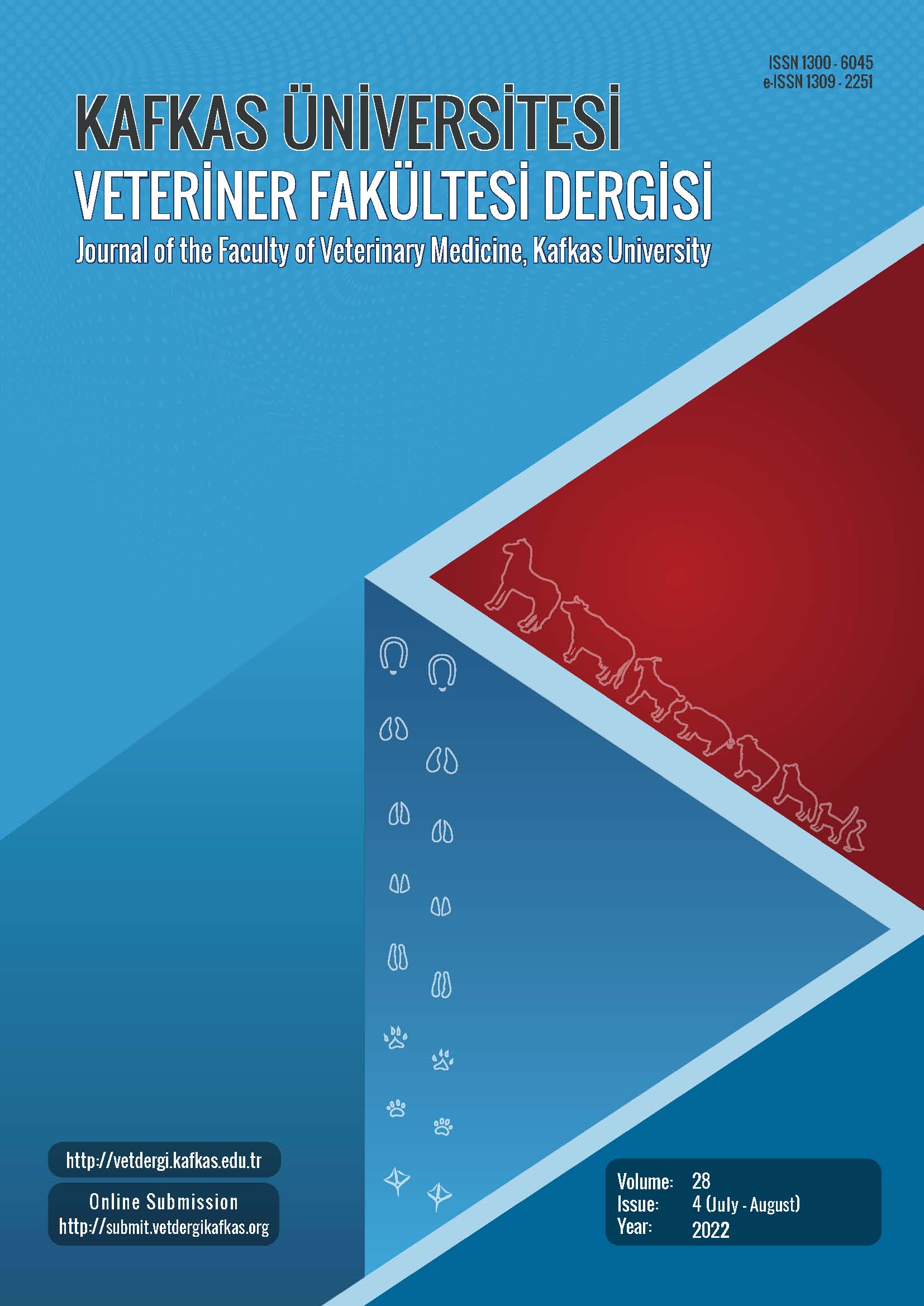
This journal is licensed under a Creative Commons Attribution-NonCommercial 4.0 International License
Kafkas Üniversitesi Veteriner Fakültesi Dergisi
2022 , Vol 28 , Issue 4
Determination of 25 (OH) D3, Iron, Free Iron Binding Capacity and D-Dimer Levels in Calf Diarrhea in Neonatal Period
1Atatürk University, Faculty of Veterinary Medicine, Department of Internal Medicine, TR-25240 Erzurum - TÜRKİYE
DOI :
10.9775/kvfd.2022.27662
In this study, it was aimed to evaluate the relationship between the clinical course of the disease and hematological data, serum
25-hydroxyvitamin D₃ (25 (OH) D₃), iron (Fe), total iron-binding capacity (UIBC), and D-dimer levels in calves with diarrhea in the
neonatal period. Within the scope of the study, 10 healthy calves (group-I) and 30 diarrheal calves in the neonatal period of diff erent
races, ages and genders were used. Calves with diarrhea were divided into mild (group-II, n=10), moderate (group-III, n=10) and severe
(group-IV, n=10) groups. Blood samples were taken from calves in all groups at once. Hematological analyzes were performed using a
veterinary-specific hematology analyzer device. In serum samples, 25 (OH) D3, Fe and UIBC levels were determined with an autoanalyzer,
and D-dimer levels were determined with an automatic immunoassay analyzer. In the hematological analysis, an increase was observed in
the number of LYMs (lymphocytes) in group-II (5.04±1.3) and III (5.2±3.3) compared to group-I (4.47±1.2), and a decrease was observed
in group IV (2.76±0.9) (P<0.05). Fe levels in group-II (59±56), group III (56±52) and group IV (72±63) were found to be decreased
compared to group-I (131±66) (P<0.05). It was determined that the 25 (OH) D3 level of group IV (13.4±8.5) was higher than that of
group-I (6.12±2.73)
Keywords :
Calf, D-dimer, Enteritis, Fe, Neonatal, UIBC, Vitamin D










